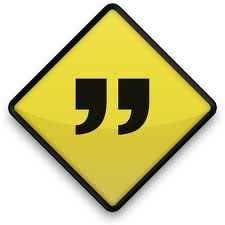Listed below are the most common attributes you can use for the quotation element:
- cite - provides the Uniform Resource Locator (URL) of the original source.
- class - provides the class or classes of the heading. This attribute is used to identify the name of the style class or classes to be used for rendering.
- id - provides a unique name for the heading.
- lang - provides the language in which the enclosed content is coded.
- style - provides a cascading style sheet (CSS) properties to the heading.
- title - privides a text title for the heading. Most web browser displays the value of the title as "tooltip".
Here's an example on how to use the quotation <q> element:
<!DOCTYPE html PUBLIC "-//W3C//DTD XHTML 1.0 Transitional//EN"
"http://www.w3.org/TR/xhtml1/DTD/xhtml1-transitional.dtd">
<html xmlns="http://www.w3.org/1999/xhtml">
<head>
<meta http-equiv="Content-Type" content="text/html;
charset=utf-8" />
<mate name="keywords" content="blog, web development" />
<title>the QUOTATION element</title>
</head>
<body>
<h1>
the QUOTATION element
</h1>
An article from the Wall Street says:
<p>
Consumers get discouraged when the picture that transfixed them at the store isn't the same at home. <q>It's getting a Porsche and driving it at 40 down a straight highway,</q> says Blaine Altaffer, a senior buyer for Circuit City. <q>You want speed and a crooked highway.</q>
</p>
</body>
</html>







0 comments:
Post a Comment